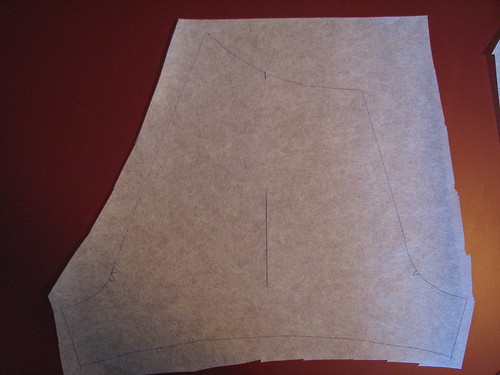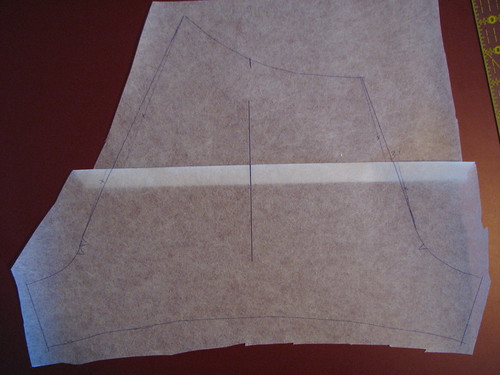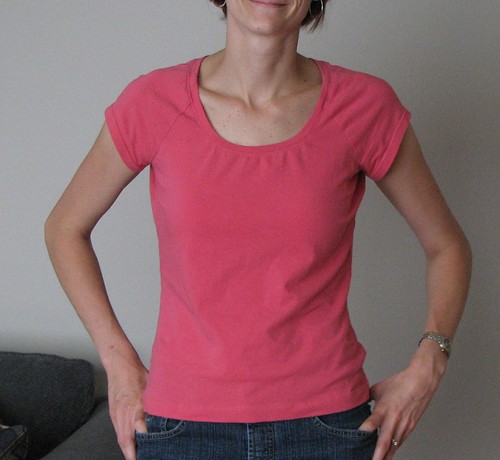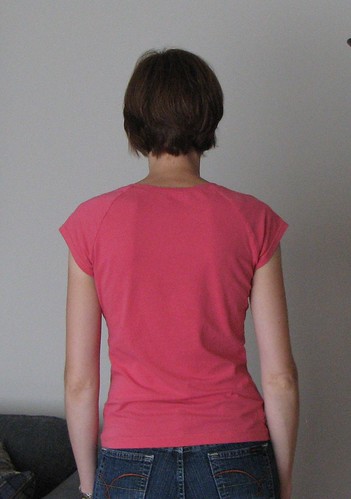

Then I closed the dart, causing the armhole seams to get longer.
 I trued the neck and armhole seam lines and traced the pattern onto a new piece.
I trued the neck and armhole seam lines and traced the pattern onto a new piece.
The front arm hole seam was increased by nearly 3" and the back by about 2.25". This same amount would need to be added to the front and back bodice, making this a rather loose-fitting top. That wasn't really the look I was going for, so I took a tuck across the sleeve, shortening it by 1.25".

I added the new difference to the front and back bodices.
As you probably suspect, this made it hard for the sleeve to get around my shoulder. I did a muslin at this stage and there was a lot of pulling. So, I marked the end of my shoulder on the muslin while I had it on and then transferred that to the pattern piece.
From that mark, I made a vertical line to both edges of the pattern and horizontal lines to the armhole seams. I marked the seam lines and cut on either side of them, leaving them as a hinge, so as not to change the length of the seam line.
I spread the pattern at the "end of shoulder" mark. As I spread it in width, it needed to decrease in length in order to stay flat. I took the picture before I had taped everything, so it isn't flat in the pic. I added 1/2" in width.

I could have added the lost length back on at the hem, but opted not to.
So, I was hoping that would take care of the sleeve troubles with the pattern, but there was still the issue of the neckband. I didn't even look at the neckband pattern. I knew that the markings were off and as drafted, it was too wide to lay flat. So, I just made my own up.
I measured the length of the neckline minus seam allowances and figured I'd make the neckband 85% of the length. In my case, that was 24". A finished width of 1/2" sounded good, so I cut it 2.25" wide. Unfortunately, I didn't have a long enough piece of fabric left, so I had to piece the neckband. It would have been nice if the neckband seams lined up with the raglan seams, but I just wasn't up for that much math, so they don't.

After all that, I think it's an okay shirt. Certainly not really worth all that messing around. You can see that it is a bit big under my arm (particularly on my left side in the picture) where I had to add for the increased length of the armhole.
And, the neckband should have been longer. There are some puckers on the front.

After all that, I chose to make the second top sleeveless. That post is coming soon...
This is a very cute top. What a lot of work you did to get such a nice tee.
ReplyDeleteBeccaA
This is a cute t-shirt.....you sure went through a lot of work!
ReplyDelete